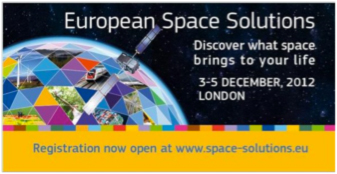High up in one corner of a trophy hall in the castle of the Bavarian royal dynasty in Berchtesgaden, Germany, hangs a poignant scene of inextricable conflict and death: the heads of two mighty stags, their antlers locked in combat.
Our tour guide translated the story behind this tableau. On October 14, 1735, a hunting party from the castle discovered the pair of struggling animals. Unable to separate the entangled antlers and with one deer’s neck already broken, the hunters had to shoot the other stag.
High up in one corner of a trophy hall in the castle of the Bavarian royal dynasty in Berchtesgaden, Germany, hangs a poignant scene of inextricable conflict and death: the heads of two mighty stags, their antlers locked in combat.
Our tour guide translated the story behind this tableau. On October 14, 1735, a hunting party from the castle discovered the pair of struggling animals. Unable to separate the entangled antlers and with one deer’s neck already broken, the hunters had to shoot the other stag.
A quiet murmur fell over the tour group, a post-conference excursion of delegates from the Munich Satellite Navigation Conference, as we reflected on the brute intransigence of nature. Then a voice spoke up from the back of the crowd: “That’s what happens when you have a PPP.”
Public Private Partnership or PPP, the now-notorious solution to a temporary impasse in Europe’s Galileo program. How quickly shibboleth can turn into epithet.
The laughter that followed the delegate’s wry comparison of death throes and thwarted politics drew strength from the discussions we had heard in the three previous days.
Prolonged negotiations have broken down between public patrons of Galileo and the private consortium seeking to complete and operate the European GNSS. The two sides have not come to terms over several major elements of risk-sharing associated with the program. The consortium has failed to incorporate a Galileo Operating Company (GOC), which would manage the system infrastructure as a profit-seeking venture under the oversight of the European GNSS Supervisory Authority (GSA).
“The negotiations are far more difficult than anyone anticipated,” Matthias Ruete, director general of energy and transport for the European Commission (EC), told his Munich summit audience.
Added Pedro Pedreira, executive director of the GSA, an EC entity that took over public sector responsibilities for Galileo at the beginning of the year, “The consortium is not able to present its own [unified] terms, let alone negotiate those terms.”
For their part representatives of the private consortium, while complaining that engineering changes and an elusive business model derived from the Galileo infrastructure were complicating the situation, acknowledged the new stalemate and their own internal disunity.
As this issue of Inside GNSS went to press, the problem was on its way to the council of European transport ministers meeting on March 22.
In its nearly 14 years of evolution, Europe’s GNSS program has met many such obstacles and, ultimately, always found a way through or around them. But never, as Ruete commented to me, have the challenges needed to be dealt with at such a high level.
And perhaps never with such urgency in the context of a global surge in GNSS expansion and modernization. China’s proposed new Compass system, the U.S. GPS III initiative, and restoration of Russia’s GLONASS are all scheduled (perhaps wishfully) to take place before or about the same time as Galileo is now expected to reach full operational capability around 2010–12.
PPP, a solution in the political environment of 1999, has now created a larger problem than the one it solved. Consequently, the public sector has a large responsibility for ensuring that it brings sufficient resources to resolve the current situation.
For years many in Europe have started referring to PPP as meaning, “Public Pays Private,” referring to the practical necessity for public subsidy — overt or covert — of an infrastructure that will ultimately pay for itself in the tax revenues generated by user equipment, services, and applications and not solely from revenues derived directly from the system itself.
For their part, the individual companies comprising the consortium need to resist the temptation of short-term competitive maneuvers or opportunistic national interests and reach an accord with the GSA.
Otherwise, without a two-sided exercise of self-discipline, it won’t matter which of these entangled entities gets its neck broken and which gets shot.





